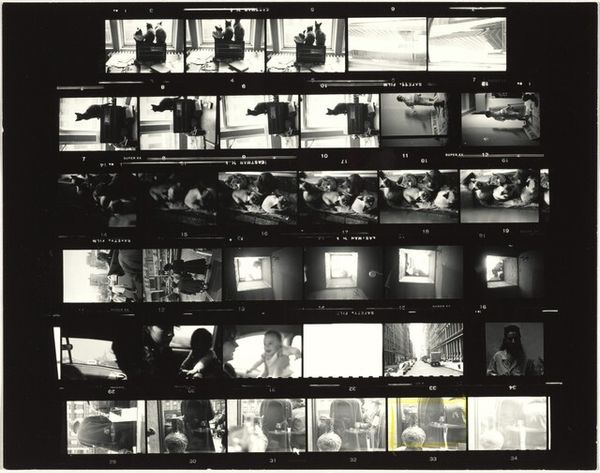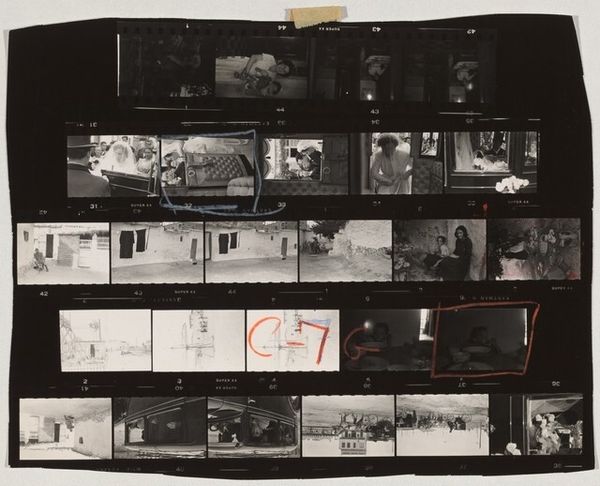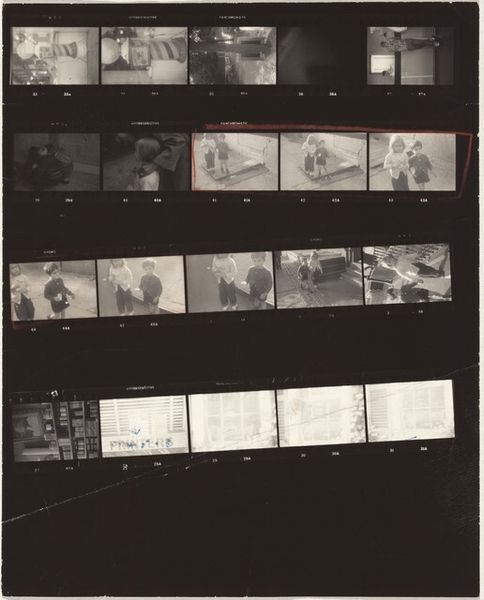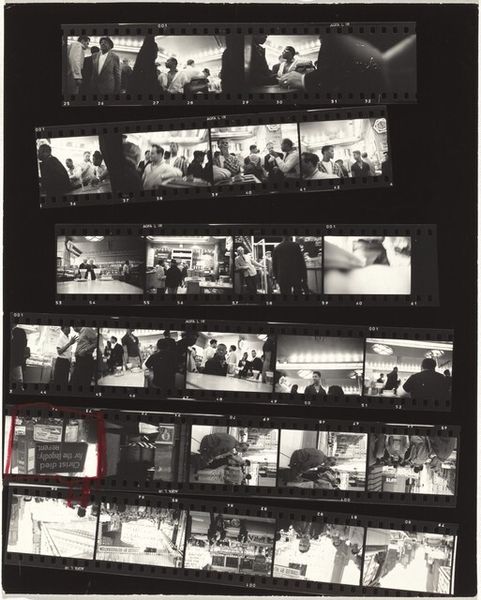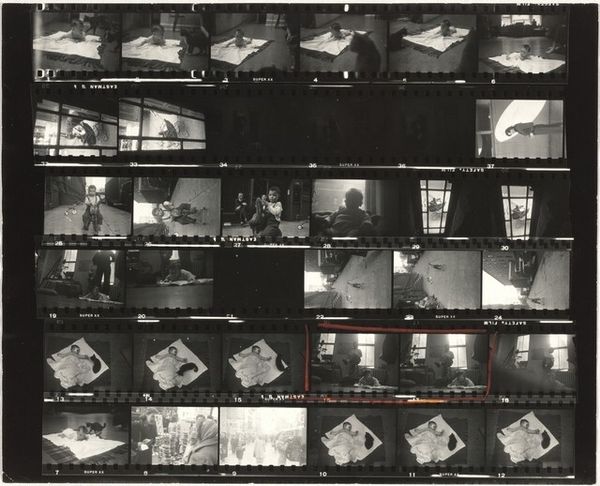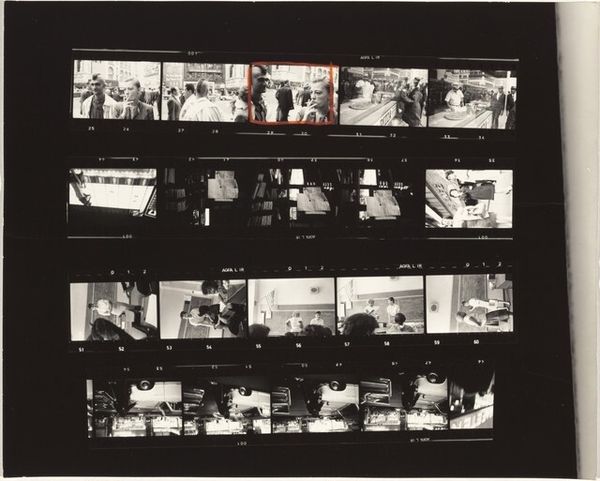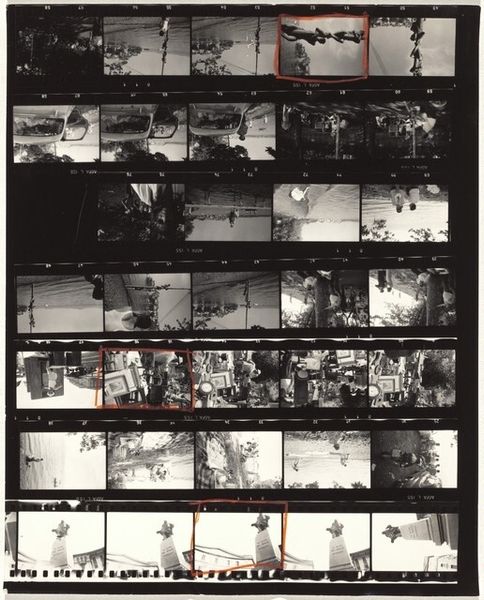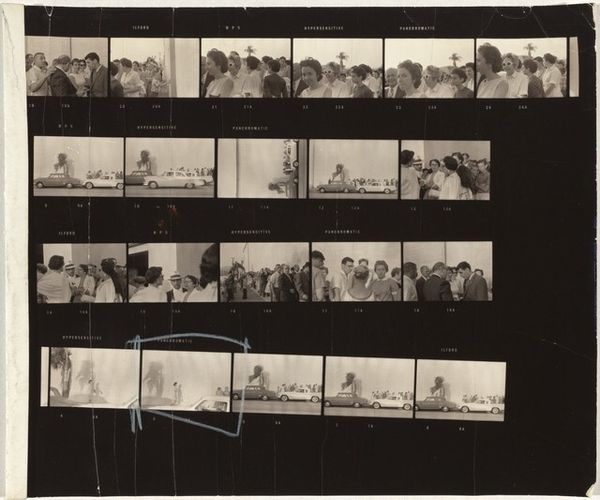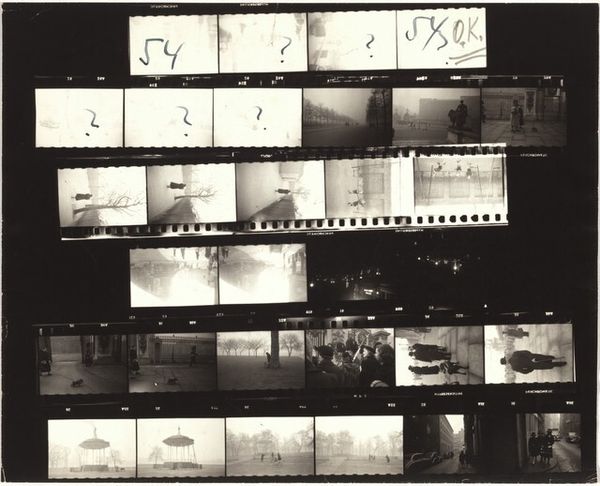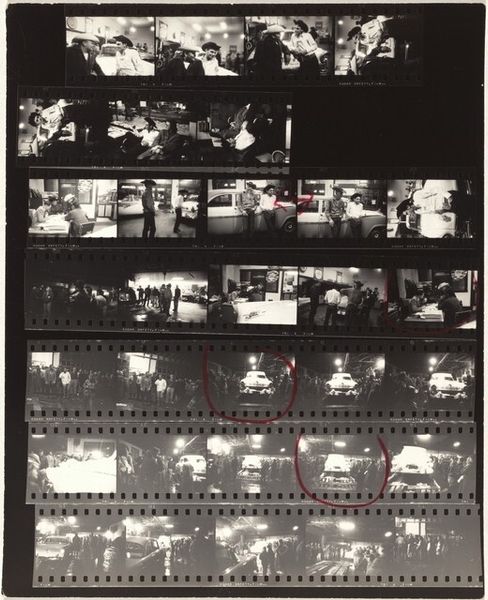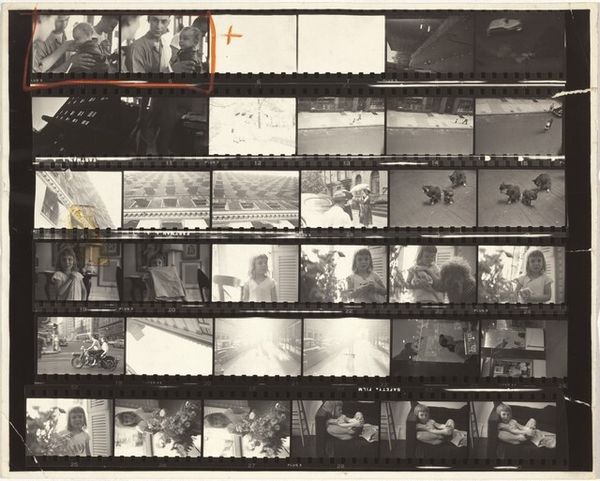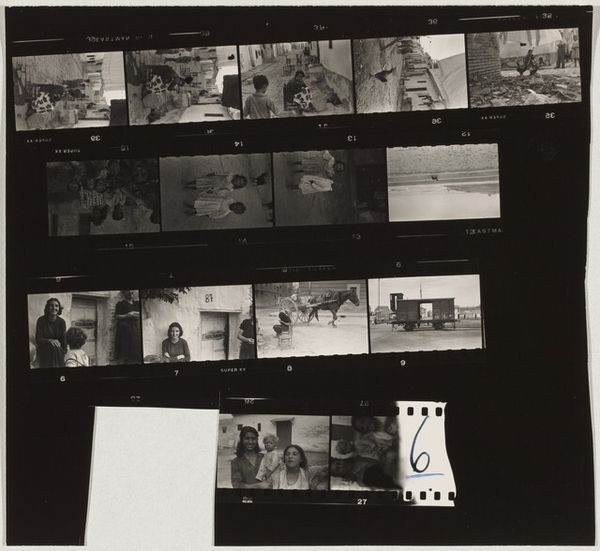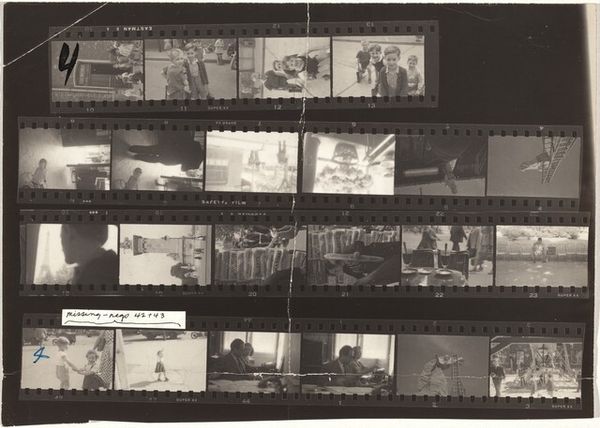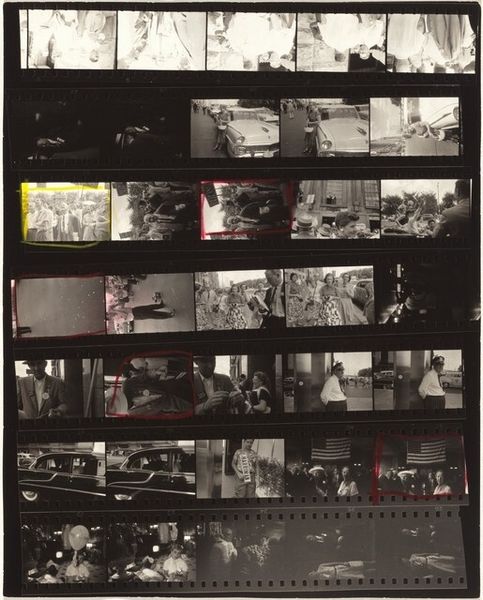
contact-print, photography
#
film photography
#
contact-print
#
street-photography
#
photography
#
historical photography
#
realism
Dimensions: overall: 20.2 x 25.3 cm (7 15/16 x 9 15/16 in.)
Copyright: National Gallery of Art: CC0 1.0
Editor: Here we have Robert Frank’s "Paris 90B", a contact print from 1951-1952. It's really intriguing to see the raw film strip like this, marked up with selections. What can you tell me about the context in which Frank created this? Curator: This contact sheet provides an intriguing glimpse into Frank’s working process, particularly concerning his approach to street photography. Seeing the uncut roll exposes the randomness and repetition inherent in capturing life as it unfolds. Consider how the marks and edits he made give insight into his vision. What societal currents do you think informed his editorial eye? Editor: Well, looking at it as a sequence, you see multiple perspectives on everyday moments. There is something both mundane and beautiful about capturing unposed people, architecture and objects like that. It seems as if he had an intention of capturing social moments in the daily life and the environment of the city Curator: Precisely. In the post-war period, street photography became a powerful means of documenting the social landscape. Frank's images challenged the romanticized vision of places like Paris. Think about the accessibility of photography at that time – how did this democratization of image-making affect who was represented and how? Editor: That makes sense. This sheet displays several images framed by hand. Why showcase all frames rather than one? Curator: Excellent question! By showing the entire contact sheet, we see the photographer's perspective in a more detailed and personal way. We understand that a whole strip of photography contributes and has led to the decision of a frame selection. Frank shares the "behind-the-scenes", or even his thinking as an artist which informs the picture production for him. Also, there's something subversive about sharing this "raw" view that dismantles some of the preciousness often afforded art. Editor: That’s a fantastic point! So, it makes us question not only what’s presented but *how* it's presented. I never thought about a contact sheet holding such social significance before. Curator: And that understanding enriches our engagement with the artwork.
Comments
No comments
Be the first to comment and join the conversation on the ultimate creative platform.
